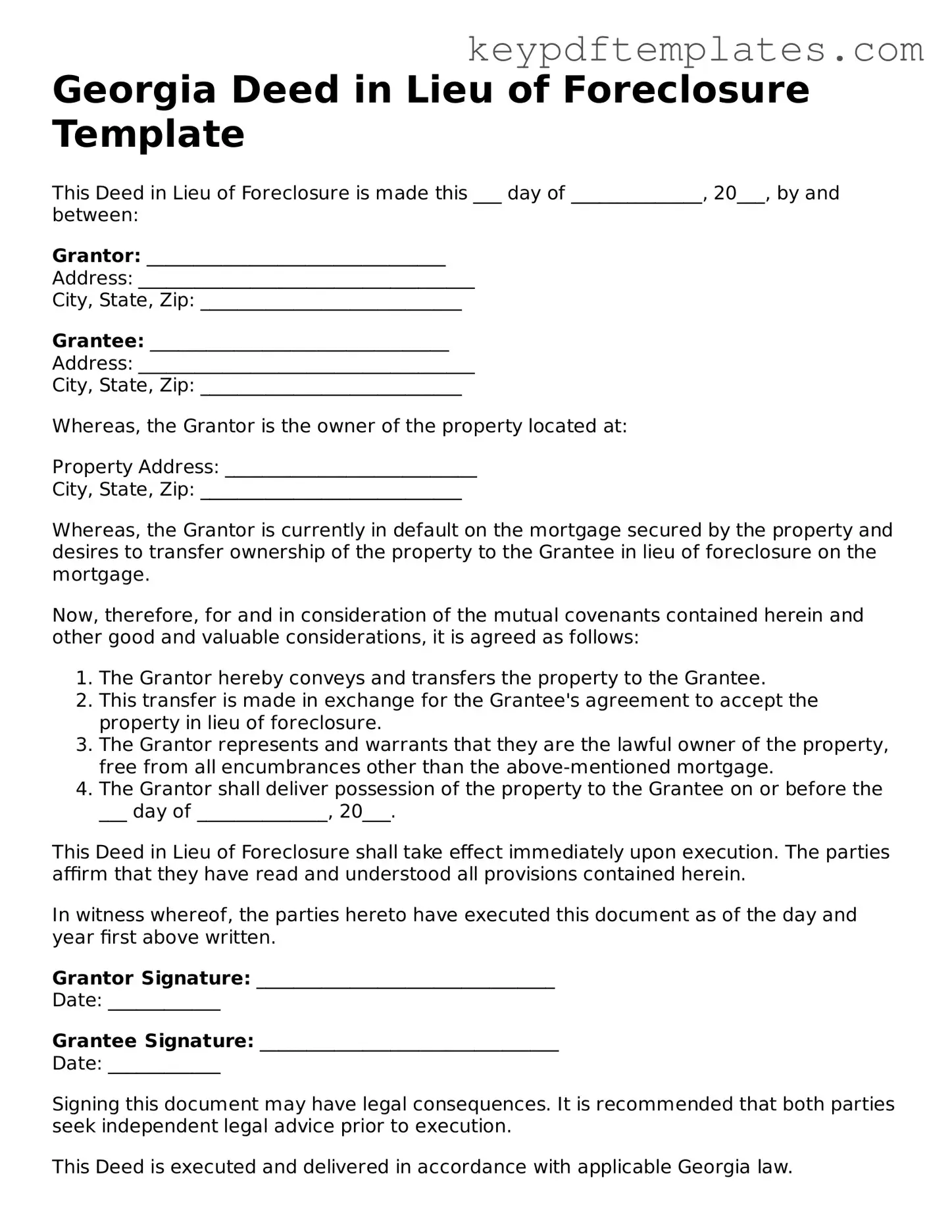Legal Deed in Lieu of Foreclosure Document for the State of Georgia
A Georgia Deed in Lieu of Foreclosure form is a legal document that allows a homeowner to transfer ownership of their property back to the lender to avoid the foreclosure process. This option can provide relief for homeowners facing financial difficulties, enabling them to settle their mortgage obligations without the lengthy and often stressful foreclosure proceedings. Understanding this process is crucial for anyone considering this alternative to foreclosure.
Modify Document Online
